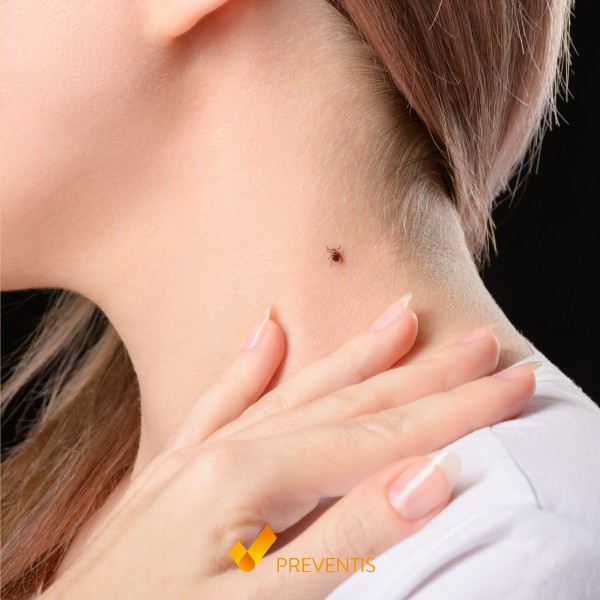Summer is finally here, people like to spend time outdoors again and enjoy nature on excursions through woods and meadows. However, the danger of tick bites should not be underestimated! In 2019, 306,000 persons with statutory health insurance in Germany were diagnosed with Lyme borreliosis.1 This corresponds to an annual incidence of 429 infections per 100,000 insured persons.
Lyme borreliosis is caused by infection with certain bacteria, the Borrelia (Borrelia burgdorferi sensu lato), and is transmitted to mammals by ticks of the genus Ixodes.
The bacteria are located in the intestines of the animals and migrate to the salivary gland only during the sucking act.2 Several hours (>12h) elapse between the tick bite and the transmission of the borrelia. Ticks in the nymphal stage are particularly dangerous, as their small size makes them very difficult to detect and they therefore usually remain on the body for longer. If the tick is removed early and with the correct technique (use tweezers, pull the tick straight up, do not squeeze, then disinfect the area), the probability of transmission is very low.3 But be careful: Compared to Borrelia, the viruses that cause TBE are transmitted directly. However, in contrast to Lyme disease, there is a protective vaccination against TBE.
There is no typical course of Lyme disease, the symptoms are extremely varied and the disease is often difficult to diagnose, as the incubation period until the first symptoms appear can vary greatly. The typical "migratory redness" (erythema migrans) appears in more than 80% of those affected within the early stage of Lyme disease after about 3-30 days.4 In addition, various general symptoms of illness such as fever, joint pain, and headache, as well as fatigue can occur.5 In the further course of the disease (several weeks to 6 months after the bite), the infection spreads in the body, whereby the nervous system, the heart, and the eyes, among others, can be affected. This second stage of Lyme disease is characterized clinically primarily by meningitis and paralysis, as well as skin growths, but may also be accompanied by heart and eye inflammation. In rare cases, a chronic form of Lyme disease develops months or even years after the initial infection. Typical manifestations in this third stage are Lyme arthritis (episodic or chronic joint inflammation), inflammatory skin lesions (acrodermatitis chronica atrophicans Herxheimer), but also damage to the nervous system, with symptoms such as concentration disorders, depression, chronic fatigue syndrome, and sleep disorders.6
If Lyme borreliosis is suspected (in the absence of the typical wandering redness, which is diagnosed purely clinically), serological laboratory diagnostics are used.2 If infection with Borrelia is clinically suspected, serological detection of Borrelia-specific antibodies in serum should be performed immediately.6 After correct diagnosis, Lyme borreliosis can be treated well. However, even after overcoming an infection, one should not feel safe, because infection with B. burgdorferi sensu lato does not leave a lasting immunity.6 Therefore, one should protect oneself as well as possible by wearing long clothing when walking in tick areas and remain alert.
With the PreventID® Lyme Borreliosis, you can detect Borrelia-specific IgM and IgG antibodies in the whole blood, serum, or plasma of your patients directly in your practice. The result can be read after only 10 minutes.
